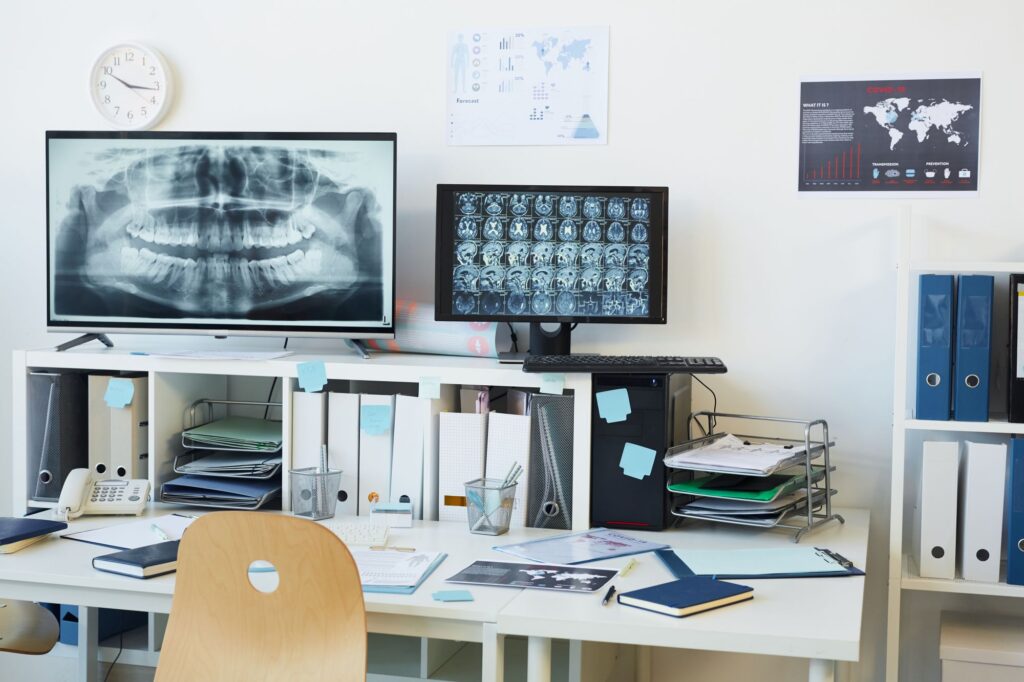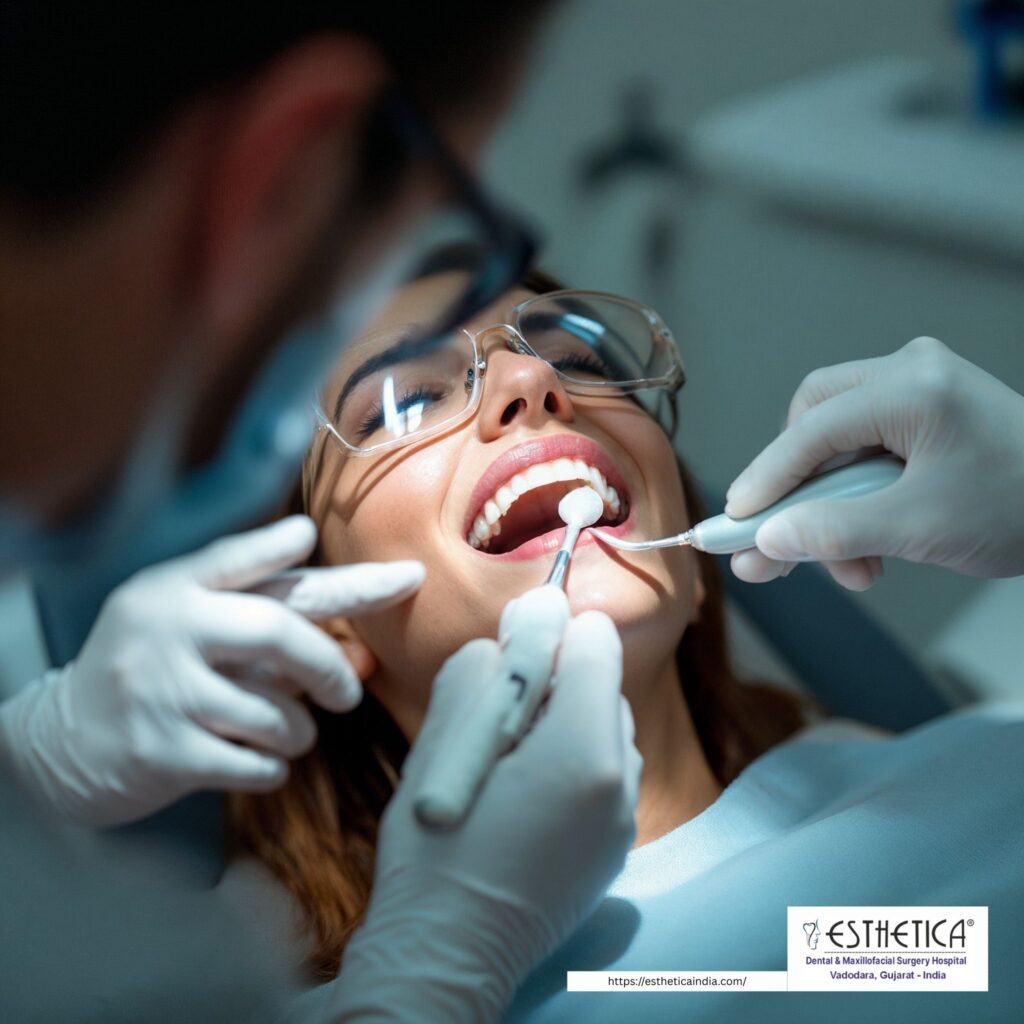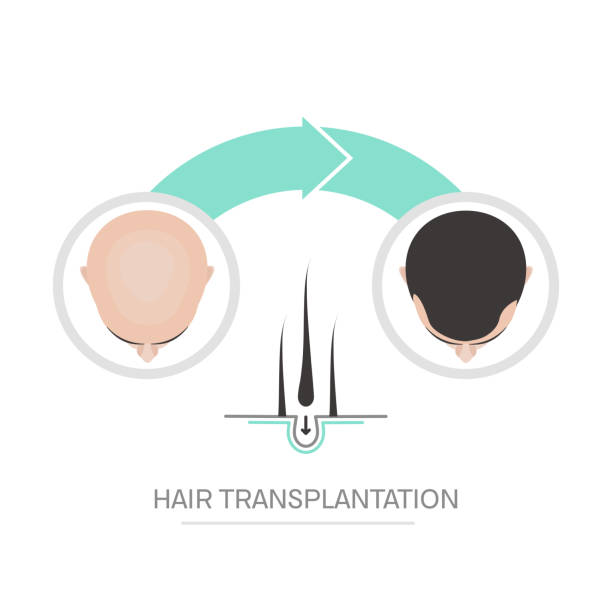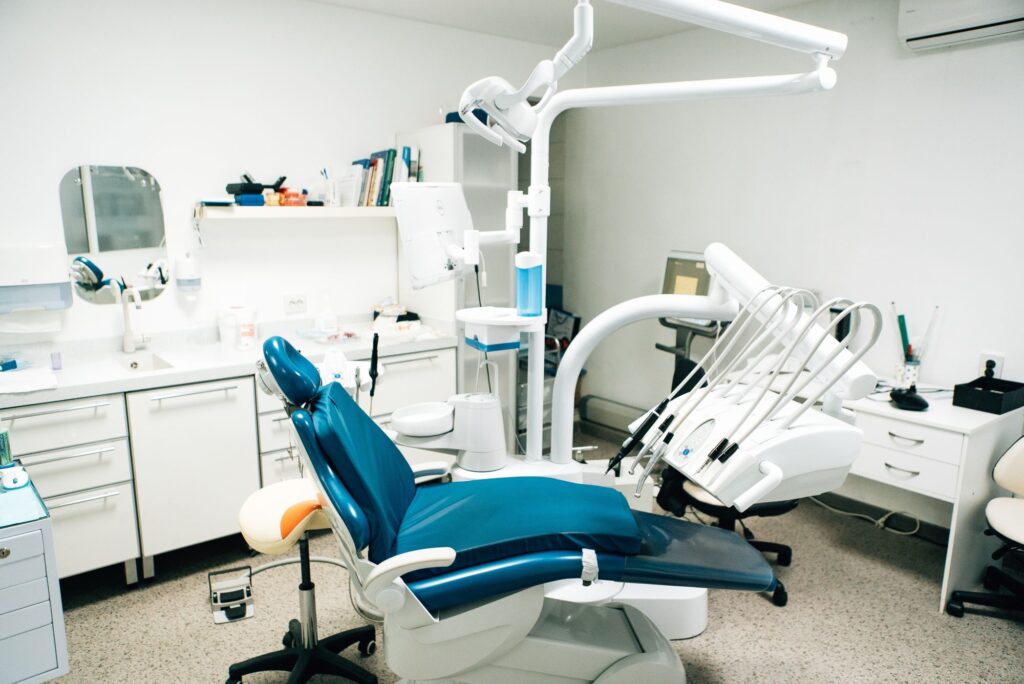Technological advancements in dentistry are revolutionizing the landscape of oral care. These cutting-edge innovations are reshaping patient experiences, making dental procedures more precise, efficient, and comfortable. From digital imaging and 3D printing to AI-powered diagnostics and laser treatments, these technologies are transforming how dentists operate.
At the forefront of this revolution is digital imaging. Traditional X-rays are being replaced by digital radiography and cone-beam computed tomography (CBCT) scanners, providing dentists with incredibly detailed, three-dimensional views of a patient’s oral anatomy. This allows for more accurate diagnoses and treatment planning, especially for complex procedures like root canals and implant placements.
Beyond imaging, technologies like 3D printing are changing how restorations are created. Dentists can now use intraoral scanners to take digital impressions, which are then used to 3D print crowns, bridges, and even clear aligners right in the office. This drastically reduces wait times and improves the fit of dental prosthetics.
Furthermore, AI-powered diagnostics are helping dentists identify potential issues, such as early-stage cavities or gum disease, with greater accuracy. Laser treatments are also becoming more common for a variety of procedures, from cavity preparation to gum reshaping, often with less pain and a faster recovery time.
This commitment to technological advancements in dentistry isn’t just about cool gadgets; it’s about providing the highest standard of care and ensuring a better, more comfortable experience for every patient.
If you’re looking for the best dentist near Toronto, look no further than Dr. Maziar Shahzad Dowlatshahi. the doctor is a highly skilled and experienced dentist who can provide you with the best possible care. He has a great bedside manner and is very gentle with his patients. He is also very knowledgeable about all the latest dental procedures and can offer you the best possible treatment options.
If you’re wondering what kind of new dental technology is about to roll out or which has already been adopted, you’re in luck. The field of dentistry is constantly evolving, with technological advancements in dentistry making procedures faster, more comfortable, and more precise than ever before. This digital revolution benefits both dental professionals and their patients, transforming everything from routine cleanings to complex surgical procedures.

Here is a small list of the latest dental technology that is redefining modern oral care:
3D Printing and CAD/CAM: These technologies allow dentists to design and create custom crowns, bridges, and veneers in a single visit. This eliminates the need for messy molds and multiple appointments, providing a more efficient experience.
Intraoral Scanners: Replacing traditional, uncomfortable impressions, these handheld scanners create highly accurate 3D digital models of your teeth and gums in minutes.
Laser Dentistry: Lasers are now used for a variety of procedures, including treating cavities and gum disease. This minimally invasive approach reduces pain, minimizes bleeding, and promotes faster healing.
Artificial Intelligence (AI): AI is being used in diagnostic software to analyze X-rays and scans, helping dentists detect issues like cavities or gum disease with incredible accuracy and at earlier stages.
Tele dentistry: This innovation allows for remote consultations, follow-up appointments, and preliminary diagnoses via video calls. Tele dentistry is improving access to care, especially for people in remote or underserved areas.
These technological advancements in dentistry are not just about new tools; they are about enhancing patient care, improving outcomes, and making the entire dental experience more positive.
Digital Dentistry and 3D Printing Technological Advancements in Dentistry
Technological advancements in dentistry are making 3D printers an integral part of every modern dental office. With these sophisticated, compact machines, dentists can now produce custom, same-day crowns and implant abutments. These are just the beginning; upcoming technological advancements in dentistry will enable printers to create an even wider range of products, including nightguards, bridge models, surgical guides, and stone models. These innovations are revolutionizing the way dental professionals provide care, offering faster, more precise, and more convenient services to patients.
Enhanced Visualization Tools
The issues of the mouth can be difficult to see, even for an experienced dentist. This is why magnification tools are essential. Historically, a single tool with multiple magnification levels was unavailable. That is, until now. Technological advancements in dentistry have led to the creation of OmniOptic by Orascoptic, a groundbreaking visualization tool that gives dentists the unique ability to change magnification between 2.5x and 5.5x.
This innovative device is a significant leap forward in dental equipment. Instead of requiring multiple pairs of loupes for different procedures, a dentist can now seamlessly switch between a lower magnification for routine check-ups and a higher one for more intricate work, such as root canals or crown preparations. This not only streamlines the workflow but also ensures a higher level of precision.
The OmniOptic is a perfect example of how modern dental technology is improving patient care. It allows for enhanced visualization, leading to more accurate diagnoses and better treatment outcomes. By embracing these kinds of innovations in dentistry, practitioners can provide a superior standard of care, making procedures more efficient and effective for everyone involved.
Technological advancements in dentistry are constantly improving clinical procedures. The same company that has developed other innovations has now come out with Spark, a cordless headlight that can be worn with eyewear or loupes. This innovation is part of a broader trend of developing tools that enhance precision and comfort for dental professionals. The cord-free design of Spark is a prime example of how modern technological advancements in dentistry are streamlining workflows and reducing physical strain, ensuring dentists can focus on delivering the highest quality of care.
Failed Implant and Prosthesis Repair
Dental implants, crowns, and dentures, while durable, can experience wear and failure over time. Traditionally, this meant the entire dental prosthesis had to be replaced, a process that is both costly and time-consuming for the patient. However, a significant technological advancement in dentistry is changing this. The Locator F-Tx Fixed Attachment System by Zest Dental Solutions offers a breakthrough solution.
This innovative system allows dentists to repair failing dental prostheses without the need for a complete replacement. This not only saves patients a substantial amount of money but also reduces the time they must spend in the dental chair. It’s an example of how technological advancements in dentistry are moving towards more efficient, cost-effective, and less invasive treatments. By providing a method to fix and maintain existing dental work, this solution enhances the longevity of prostheses and improves the patient experience. This particular technological advancement in dentistry highlights a shift towards sustainable and practical solutions for common dental problems.
Improved Digital Impressions
Good impressions come from good models and scans which come from high, accurate scans. With the RIO 3 intraoral scanner, dentists can get the color or black and white images all with being wireless and cart of pod set up. This scanner not only provides detailed photos with precise coloring and shade measurements but is also enhances the patients’ dental office experience.
Digital cameras also have undergone improvements and now feature preset modes, take vibrant, bright, detailed photos, are user-friendly, and are resistant to water and chemicals.

Advanced Lasers
Technological advancements in dentistry have made lasers an accurate and safe way to conduct precise dental procedures. Lasers have been used to eliminate oral cancer cells and perform intricate incisions with minimal bleeding and faster healing times. This modern dental technology allows for a high degree of precision, which is crucial for sensitive operations. The use of lasers is a prime example of how innovations in dentistry are changing patient care for the better. These advancements are not only enhancing the safety and effectiveness of treatments but are also contributing to a more comfortable patient experience. Dental technology continues to evolve, bringing powerful tools like lasers that significantly improve outcomes. These technological innovations are transforming the field, making complex procedures more accessible and efficient. The integration of such advanced dental equipment is becoming a standard in modern practices.
With the first dual-wavelength soft tissue diode laser in production, it will be a matter of time before lasers will perform more dental procedures, including crown lengthening, exposing unerupted teeth, and recovering implants and cut out and drain teeth abscesses.
Bluetooth Toothbrushes
As if electronic toothbrushes weren’t enough, we’re now seeing “smart” electric toothbrushes that run on Bluetooth—a prime example of the technological advancements in dentistry. These toothbrushes are a testament to the latest technological advancements in dentistry, incorporating features like a location sensor, scrubbing sensor, pressure sensor, and a mouth map. These new technological advancements in dentistry offer customized coaching for better dental health care. The integration of these technological advancements in dentistry into our daily routine is changing how we approach oral hygiene.
The rapid technological advancements in dentistry are not just for the dentist’s office; they are also available for home use. These smart toothbrushes represent the pinnacle of technological advancements in dentistry for personal care. They provide real-time feedback and data, which is a significant step forward thanks to technological advancements in dentistry. These technological advancements in dentistry are making it easier than ever to maintain a healthy smile. The future of dental health is here, and it’s powered by technological advancements in dentistry.
Mobile Dental Photography
Everyone knows that Smartphones are more than a phone. The advancements of Smartphones have yielded phones with high-quality cameras. Dentists can use their Smartphones to take photos and upload the images to a computer or even look at and analyze the image while away from the office.
Improved Cavity Detection
Dental x-rays are a common way to catch cavities early. Some patients don’t like x-ray because of the possible radiation. New cavity detection technology bypasses the radiation of x-ray while providing the same quality and accurate diagnosis.
Portable equipment and cameras that utilize infrared light help dentists more easily observe and diagnose dental issues.
Increased Use of Cloud-based Software
Saving essential files and valuable, confidential patient information on a computer hard drive is outdated and less secure. Should something happen to those back-ups, the data is lost forever.
Saving this type of information to the cloud grants the dentist easy access to records and files anywhere and anytime. Collecting information over the Internet spares the dentist’s frustration and time looking for information.
Machine Learning Automated Software
Dental software is the backbone of any dental office. It manages all of the crucial data that will help in maintaining a patient’s dental health.
It used to be a balancing act in trying to book enough appointments in a day while not getting yourself double-booked. When a patient canceled, you have to inform another patient about the slot availability quickly.
This can be stressful, and it can keep you from doing your job. New machine learning, however, can now schedule appointments, detect and quickly fill cancellations, in addition, to keep schedules full by monitoring the available chair time and scheduling pre-selected patients.
Great Aligner Selection
Who needs metal braces when clear, plastic clear aligners can do the same thing without the embarrassing look or scratched-up mouth? More competition in the aligner market will only lead to lower-cost and more effective invisible aligners.
Sleep Issue Diagnoses
With more Americans experiencing sleep disorders such as sleep apnea and Bruxism, it will be more common for dentists to provide sleep issue treatment in their offices.
Better Quality Materials for Restorations
The future of restoration materials will likely include some bioactive materials. Right now, some possible future restoration materials have been found to convert into a chemical called hydroxyapatite, which not only binds to the tooth, but it also strengthens the too.
Digital Scanning Devices
A few years ago, the CEREC and E4D digital scanners were all the rage. With digital scanners’ success, more companies are getting into the dental scanning game, including many from Europe. The competition will get fiercer, so expect to see digital scanners with more capabilities coming out soon.
Increased IT Security
With the increased incidents of significant data breaches in the last few years, it makes sense that more and more dentists will invest in more sophisticated and resistant hackers to protect their patients’ confidential medical history records.
Patients may not enjoy going to the dentist, but if there is something wrong in their mouths and their mouth hurts, they will visit the dentist. Advancements in dental technologies aim to help dentists better diagnose and treat dental conditions and give dental patients a more pleasant experience.



